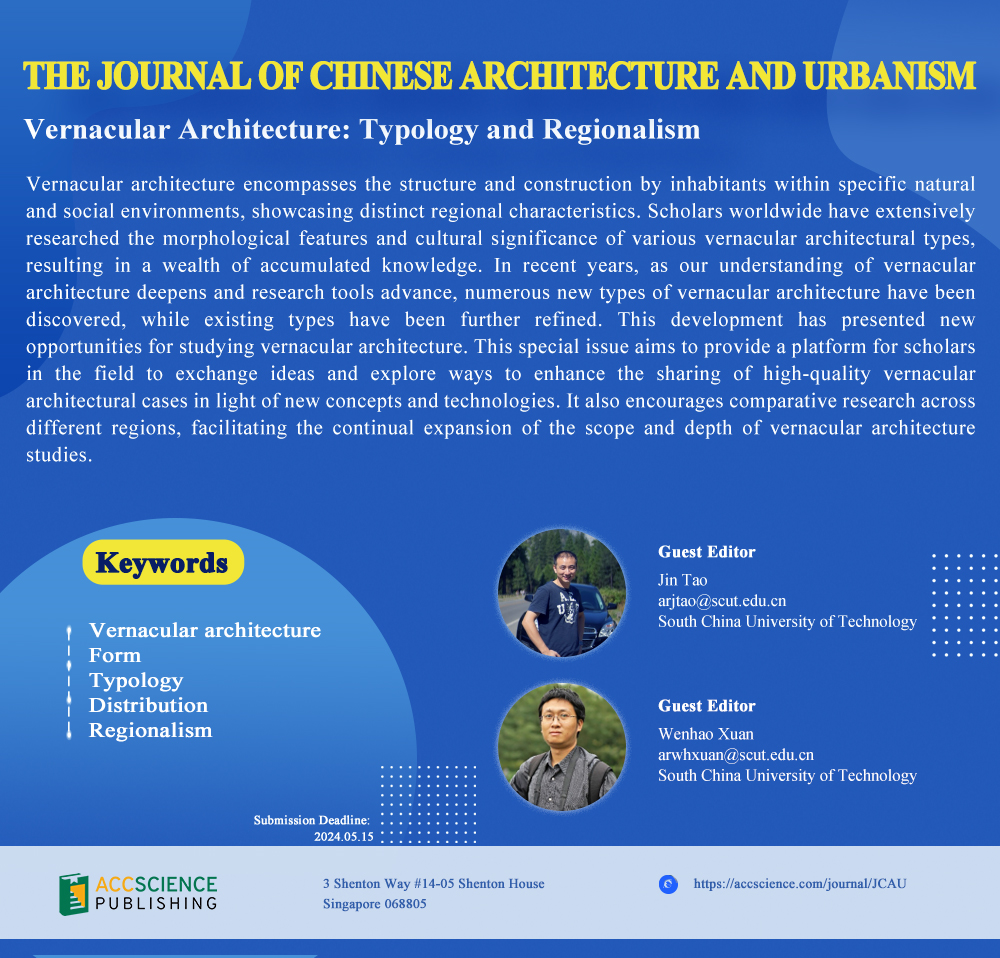
Vernacular architecture encompasses the structure and construction by inhabitants within specific natural and social environments, showcasing distinct regional characteristics. Scholars worldwide have extensively researched the morphological features and cultural significance of various vernacular architectural types, resulting in a wealth of accumulated knowledge. In recent years, as our understanding of vernacular architecture deepens and research tools advance, numerous new types of vernacular architecture have been discovered, while existing types have been further refined. This development has presented new opportunities for studying vernacular architecture. This special issue aims to provide a platform for scholars in the field to exchange ideas and explore ways to enhance the sharing of high-quality vernacular architectural cases in light of new concepts and technologies. It also encourages comparative research across different regions, facilitating the continual expansion of the scope and depth of vernacular architecture studies.
An analysis of the spatial morphology of cohesive village in Leizhou Peninsula of western Guangdong Province



